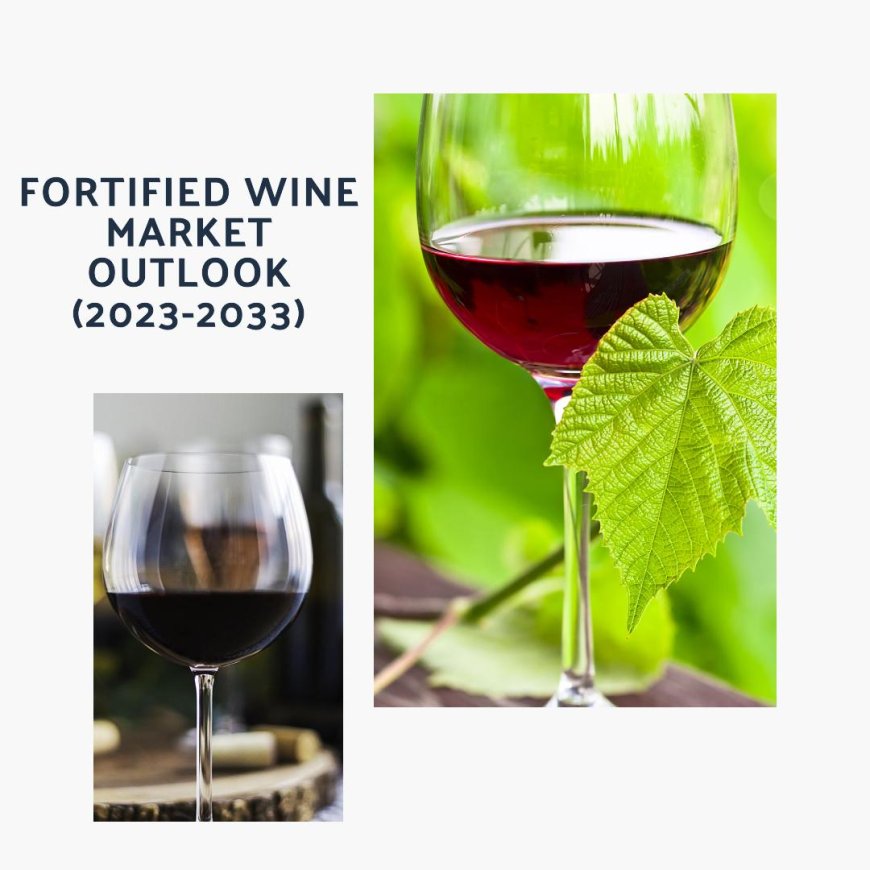Fortified Wine Market Demand is Expected to Increase at a CAGR of 6.8% through 2033

The global fortified wine market is estimated to evolve at a CAGR of 6.8% from 2023 to 2033. The market stands at US$ 13 billion in 2023 and is slated to reach US$ 25 billion by 2033-end.
The fortified wine market is experiencing a significant surge, driven by evolving consumer preferences, innovative product offerings, and increasing awareness of the benefits associated with moderate wine consumption.
Fortified wines, known for their higher alcohol content achieved through the addition of spirits, offer a diverse range of flavors and styles that cater to various consumer tastes and occasions. This article delves into the factors propelling the growth of the fortified wine market, key trends, and future prospects.
For More Insights into the Market, Request a Sample of this Report:
https://www.factmr.com/connectus/sample?flag=S&rep_id=163
Market Drivers and Growth Factors
Rising Consumer Demand for Premium Products: Consumers are increasingly inclined towards premium and high-quality alcoholic beverages. Fortified wines, often seen as a sophisticated choice, have benefited from this trend. The unique production process and the complex flavors of fortified wines like Port, Sherry, and Vermouth appeal to connoisseurs and casual drinkers alike.
Health and Wellness Trends: Moderate wine consumption has been linked to certain health benefits, such as improved heart health due to the presence of antioxidants like resveratrol. This health-conscious trend has positively influenced the fortified wine market, as consumers seek beverages that offer both enjoyment and potential health benefits.
Expanding Culinary Applications: Fortified wines are gaining popularity in the culinary world. Chefs and mixologists are increasingly using these wines in recipes and cocktails, enhancing flavors and creating unique dining experiences. This culinary integration has opened new avenues for market growth, appealing to both food enthusiasts and professional kitchens.
Cultural and Traditional Significance: Fortified wines have deep cultural roots and traditional significance in various regions. For instance, Sherry has a storied history in Spain, while Port wine is integral to Portuguese heritage. These cultural connections help sustain a loyal consumer base and attract tourists, further driving market demand.
Top Companies are:
Taylor’s Port, Albina & Hanna, Contratto, Vinbros, Treasury Wine Estates, Backsberg, Mazuran’s Vineyards Limited, E. & J. Gallo Winery, Constellation Brands, Inc., Trinchero Family Estates, The Wine Group, Liberty Wines Limited, Precept Wine, LLC, Michelle Wine Estate
Market Segmentations
By Product: Madeira, Marsala, Port, Sherry, Vermouth
By Sweetness Level: Dry, Semi-sweet, Sweet
By Sales Channel: Modern Trade, Supermarkets/Hypermarkets, Liquor Stores, e-Commerce
By Region: North America, Europe, Asia Pacific, Latin America, Middle East & Africa
Get Customization on this Report for Specific Research Solutions:
https://www.factmr.com/connectus/sample?flag=RC&rep_id=163
Key Trends in the Fortified Wine Market
Innovative Flavors and Varieties: Producers are continuously experimenting with new flavors and blends to cater to diverse consumer preferences. Innovations such as organic and biodynamic fortified wines are gaining traction, appealing to environmentally conscious consumers.
Sustainable and Ethical Production: The push towards sustainability and ethical practices is reshaping the fortified wine market. Wineries are adopting eco-friendly practices, such as using renewable energy, reducing water usage, and implementing sustainable farming techniques. This shift not only meets regulatory requirements but also resonates with environmentally aware consumers.
E-commerce and Digital Marketing: The rise of e-commerce and digital marketing has transformed the way fortified wines are marketed and sold. Online platforms offer convenience and a wider reach, enabling consumers to explore and purchase a variety of fortified wines from the comfort of their homes. Social media and digital campaigns also play a crucial role in educating consumers and driving engagement.
Experiential Marketing: Brands are leveraging experiential marketing to create memorable experiences for consumers. Wine tasting events, vineyard tours, and interactive sessions with winemakers provide consumers with an immersive experience, fostering brand loyalty and increasing sales.
Future Prospects and Opportunities
The future of the fortified wine market looks promising, with several growth opportunities on the horizon. Emerging markets in Asia and Latin America present significant potential due to increasing disposable incomes and a growing interest in Western lifestyle and beverages. Moreover, the development of new fortified wine products targeting younger demographics can drive further market expansion.
Advancements in production technology and aging techniques will likely lead to the creation of more refined and diverse products, appealing to both traditionalists and modern consumers. Additionally, collaborations between wineries and other sectors, such as hospitality and tourism, can create synergistic growth opportunities.

 swatichaudhari
swatichaudhari 










